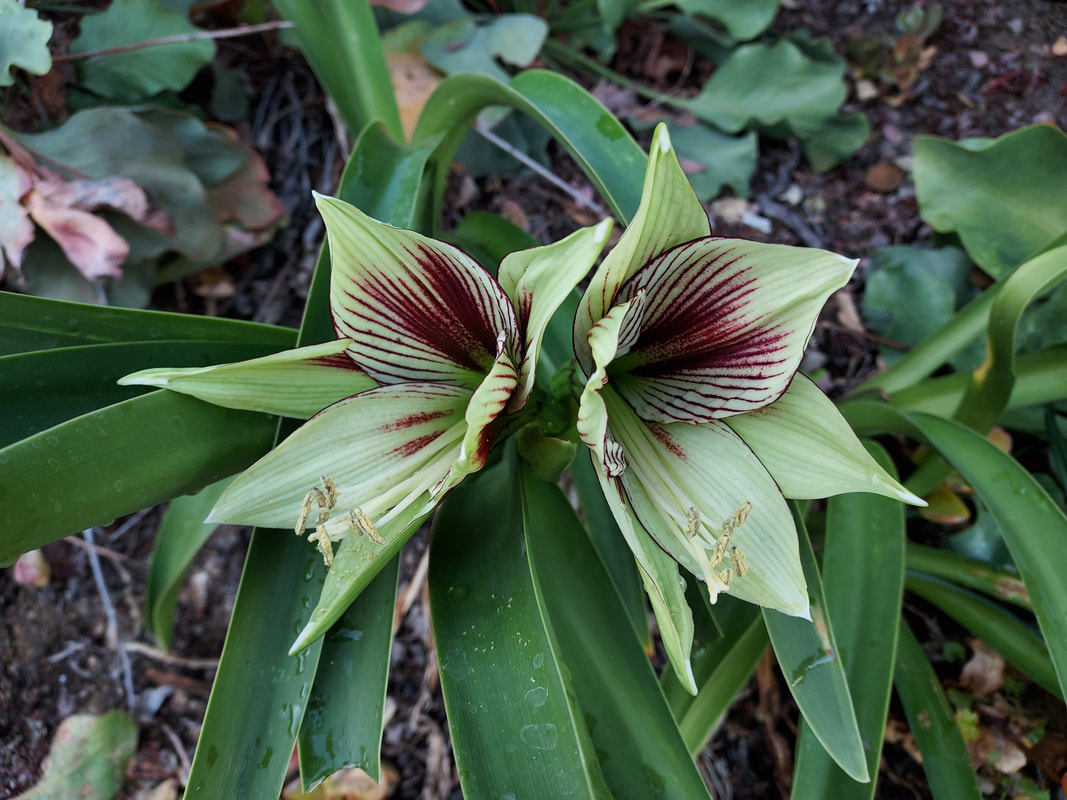| | Clearing the garden of dead leaves and perennial trimmings used to be de riguer at this time of year, but our garden wisdom has changed. While some gardeners are “neatniks” needing swept-clean garden surfaces and perennials trimmed-back to ground level, we’ve learned that it’s much more sustainably supportive of our garden soil and beneficial insects and pollinators to leave those dead bloom stalks as fodder for overwintering beneficials and birds, and the other plant debris as mulch covering soil surfaces. I used to cut down my perennials to give rain a place to hit the soil more directly to be absorbed more readily, but now I leave them standing, especially if they have seed pods, for the birds and lizards and other critters needing protective housing. The dried foliage from Spring-blooming plants has protected the soil from summer’s beating heat and will remain also. That wonderful rain we had earlier this month did reach the soil underneath it, and the soil still remains barely moist all these weeks later. So the soil critters are happy, I’m sure, with all that insulation and food. Even pathways are strewn with dried foliage bits that’s deterred much weed-seed germination from those rains. It’s a good place for larger-sized leaves to be left, to literally shade the soil and keep many weed seeds from sprouting. Besides, leaving them in pathways is less laborious than shredding them for the compost pile. It’s been years since I turned my soil when I scattered manure and compost and organic fertilizer between changing edible crops. The soil’s microorganisms have developed their own connective networks that I don’t want to disturb. So, instead of turning the soil and amendments to the full depth of my spading fork, I now use a hand-fork to barely combine the different elements ready for scattering my seeds and planting my seedlings. Then I use the lowest sprinkle setting on my hose wand to barely settle in the seeds and transplants, repeating the barely-wetting several times so to avoid creating rivers that redistribute the seed elsewhere and foil my labeling placement. I repeat this barely-wetting procedure every day in the evenings to keep the soil barely moist and well-connected to the seeds to facilitate their germination, and to encourage the transplants to reach out into the soil to establish new roots that anchor them to their new home. Of course, any plants that were diseased or infested with insects should definitely be cut back to the ground and removed from the garden entirely to the trash – and NOT the compost pile! I dispose of all tomato plant remains, even if the varieties were labeled as disease resistant. I just don’t want even the merest possibility of bad stuff proliferating in my garden! For more garden tasks, see November. For more major-topic discussions from past blogs, see Homepage. |
|
0 Comments
|
Categories |

















 RSS Feed
RSS Feed